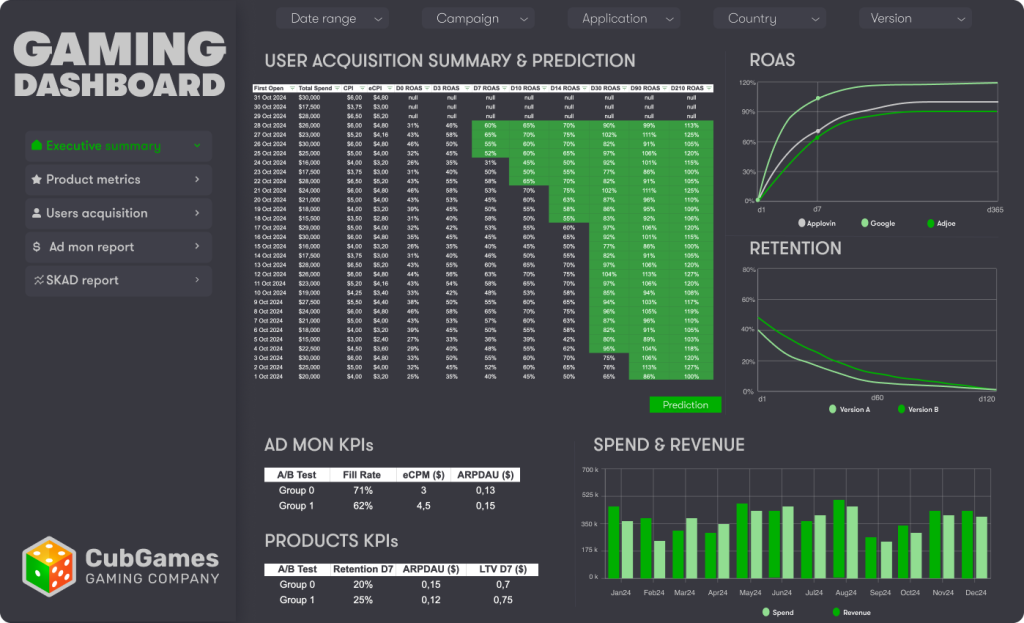Imagine a company where each department works on different data. The sales team analyzes results in CRM, marketing relies on data from Google Analytics, and the finance department relies on ERP reports. Each has its own point of view, and decisions are made based on incomplete information. As a result, the company operates in silos, and the teams don't see the full business picture.
Lack of data integration leads to wrong decisions, inefficient allocation of resources and missed opportunities for growth. When marketing doesn't know which campaigns are generating the highest-value customers, and sales doesn't have access to the history of customer interactions with the service department, the organization operates reactively instead of strategically.
The solution is to implement Business Intelligence (BI), which combines data from different sources and provides a single, comprehensive view of the company's situation. BI enables you to analyze trends, forecast performance and make decisions based on real data instead of intuition. In this article, we will show you what benefits BI can bring to your organization and how to use its potential effectively.
BI allows you to build from information, on a foundation from data
Unify data from different sources
Your company has customer data in CRM, financial data in ERP and website traffic in Google Analytics. Failure to integrate these sources leads to inconsistencies and hinders decision-making. Based on effective data integration, you can leverage Business Intelligence , gaining a consistent view of your business.
Increasing the reliability of analysis
Without proper BI implementation, each department may interpret data in its own way, leading to conflicting conclusions. Consistent reporting avoids chaos and makes decisions based on uniform metrics.
A practical example
Imagine a manufacturing company with an inventory planning problem. Sales suggest high demand, but inventory data says otherwise. With BI, teams can unify data insights to avoid overproduction and waste.
You can modify the above example any way you like: sales vs. marketing, accounting vs. collection department, and so on.
BI in marketing - more effective campaigns and better budget allocation
Campaign optimization and ROAS
Companies often invest large budgets in marketing, but don't always know which campaigns deliver the best results. BI helps identify the most effective channels and optimize ROAS. And adding an ML element to it will additionally allow predictions of results, even before the campaign starts!

Better customer segmentation
Based on historical data, BI allows you to create advanced audience segments, for example, by purchasing behavior or product preferences. This allows you to precisely target ads and personalize communications. It's not the audience segments you're familiar with, which involves grouping customers together: Women who have made a purchase in the last 30 days from the Mazowieckie province. It's super-precise segmentation that takes into account dozens of other elements that give you a more complete picture of the person you want to display the perfect ad to at the perfect time.
Imagine an e-commerce site that integrated data from Meta Ads, Google Ads and GA4. Analysis showed that campaigns on Instagram generated high traffic but low sales. After optimizing the budget on Google Shopping, the revenue increase was 30%. You can modify the example as you wish: identifying campaigns that deliver customers, but on a low margin, making the company's profit not at the expected level….
BI in sales - better team performance and offer management
Analysis of sales funnel effectiveness
Proper data visualization can identify which stages of the conversion funnel need improvement. Companies can better understand where they are losing customers and how to optimize the sales process.
Imagine a SaaS where the sales director noticed that many potential customers were dropping out during the demo. Analysis showed that a complicated setup was to blame. After simplifying the process, conversion increased by 15%. Would this have been possible without combining multiple sources of information into a single source of truth? Doubtful.

Better sales forecasting
By combining BI with Machine Learning, companies can more accurately predict future sales performance based on historical data and market trends. The ability to analyze seasonality and the impact of various factors on sales allows them to make better strategic decisions.
BI in finance - cost control and better investment decisions
Automatic margin and cost analysis
Well-built reporting allows monitoring the profitability of individual activities and eliminating unnecessary expenses. Companies can dynamically adjust strategy to changing market conditions.
One of our clients used BI to analyze operating costs and discovered that 20% of orders were generating losses. Optimization of logistics processes saved 500K annually.
Detecting financial anomalies and inefficiencies
BI helps quickly detect abnormal trends in finances, such as unexpected increases in operating costs or decreases in margins. Automated analysis allows you to react to risks in real time and optimize expenses.
BI in business - increasing operational efficiency
Monitor the supply chain and optimize logistics
Using the power of data analytics in modern BI tools, you can track the entire supply chain, identify bottlenecks and optimize delivery routes. This can reduce lead times and logistics costs.
Eliminate waste and manage inventory
By analyzing historical data, BI enables precise inventory management. Companies can avoid excess inventory and minimize losses associated with obsolete goods.
Summary
Business Intelligence is the key to modern business management. It enables better analysis, process optimization and data-driven decision-making. With high-end BI reporting, any organization can increase efficiency and competitiveness in the market.
If you want to turn data silos in your company into valuable insights that drive sales contact us.



























